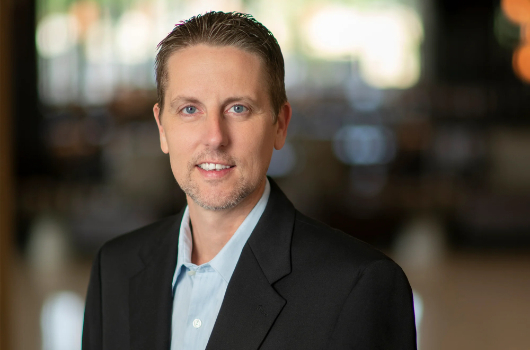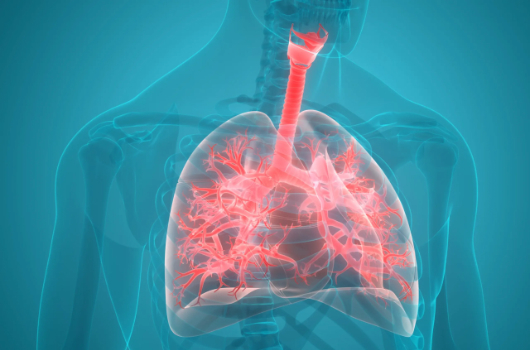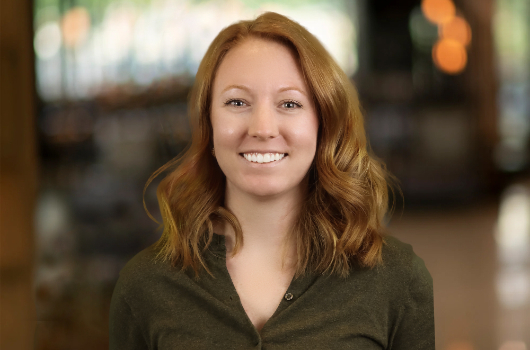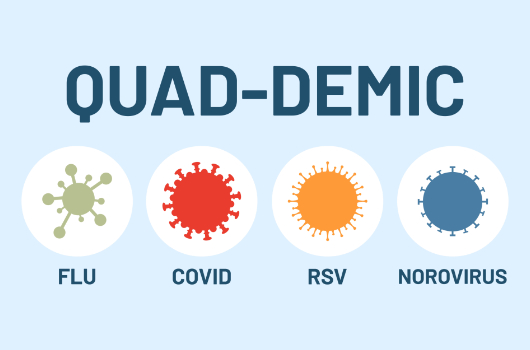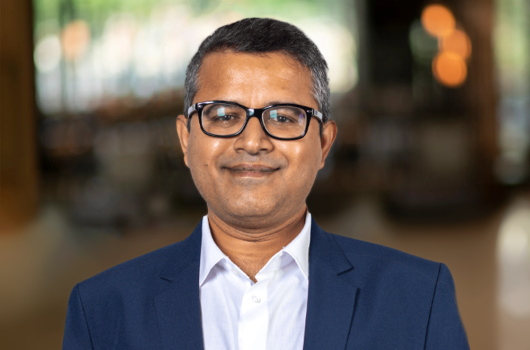Biography
Meet Vijay Singh, Vice President of Research & Development
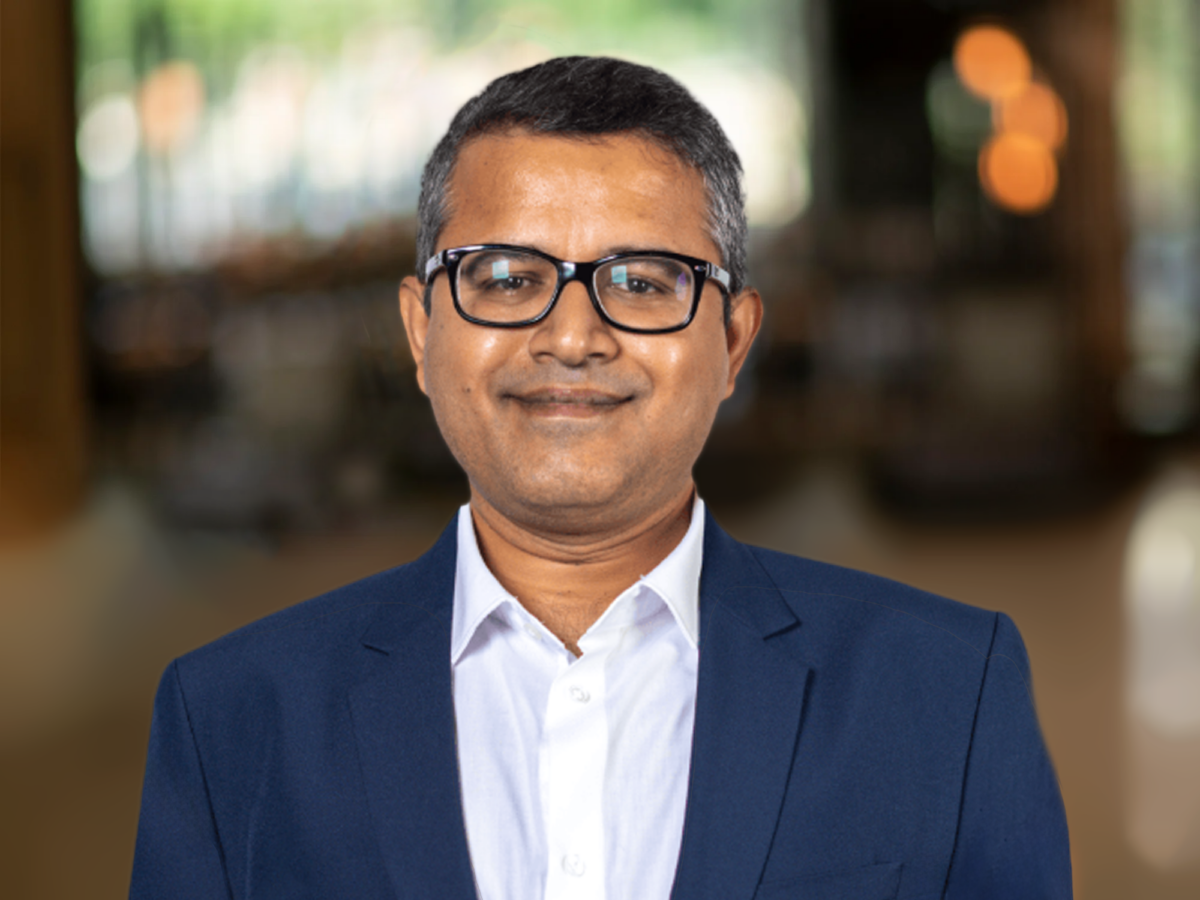
Dr. Vijay Singh • July 12, 2021
As the Vice President of Research & Development, Dr. Vijay Singh (PhD, University of North Texas) oversees many of the laboratory tests and procedures that form the core services HealthTrackRx offers. Specifically, Dr. Singh designs the processes that HealthTrackRx uses to detect and identify pathogens within patient specimens. This work involves, among other things, reading and conducting scientific research, creating infectious disease assays that provide quick and accurate results, optimizing laboratory workflow, and crafting efficient molecular testing panels that meet the changing needs of patients and clinicians.
“Any time you’re using molecular tools, mainly DNA and RNA, as points of detection for pathogens, that’s molecular diagnostics,” Dr. Singh told me in our recent conversation. This approach is used by the Infectious Disease Technical laboratory, where, as Dr. Singh explained, their approach is “based mainly on PCR (polymerase chain reaction) for detecting a variety of pathogens in literally all sample types that can be provided.” Our serology laboratory uses a similar process to detect COVID-19 antibodies in blood samples.
Under Dr. Singh’s guidance, HealthTrackRx offers syndromic panels that test for most pathogens known to cause a set of symptoms. In this way, if a physician determines it is necessary to identify a specific pathogen because the patient’s symptoms are so severe, then the physician can order a single panel that tests for the set of pathogens that frequently cause those symptoms. “That’s the idea for those large panels,” Dr. Singh stated. “Within the limitations of the technology, we are able to provide the maximum amount of information to the physician so that he or she is able to make the best care and treatment decisions for their patient.”
Founding the Infectious Disease Laboratory
Though Dr. Singh has held his current position for only about a year, he has been with HealthTrackRx for much longer, beginning in 2014 as a supervisor in the Toxicology Technical laboratory. In 2017, Dr. Singh, Dr. John Granger, and Dr. Jay Reddy founded the Infectious Disease department. Their first step was to find and acquire the most effective, high-throughput equipment available for PCR testing. They selected Thermo Fisher Scientific’s OpenArray system, which Dr. Singh described to me with some pride as “the next generation of PCR.”
“Looking at many different offerings in the marketplace, we settled on the OpenArray system because we believed—and we’ve been proven right on this—that it is the best, most economical way to test, using PCR technology, the largest number of samples for the largest number of pathogens.”
“It is mind boggling,” Dr. Singh said, reflecting on the volume of samples that the OpenArray system can process. “If I had known about this as a graduate student, I would have been all over it. The idea that I can do 3,000 reactions in a single run—that’s almost a year’s worth of work that can now be done with a single run!”
Growing the Department
Since 2017, spurred in part by the COVID-19 pandemic, the Infectious Disease laboratory has grown tremendously. “I remember we received three samples on the first day,” Dr. Singh recalled. “In three and a half years, we’ve gone from three to more than 50,000 samples a day. I think the largest we saw in one day was 56,000.” Still, he hesitated to claim that his job had changed much because of the pandemic. “It is my job,” he said, “to come up with new tests and keep up to date on research associated with it. So, I wouldn’t say that my job was dramatically affected, though the focus has certainly changed.”
Publishing Research
In addition to his work for the laboratories, Dr. Singh has authored several papers that have been published in scholarly journals. His most recent, “SARS-CoV-2 Respiratory Co-Infections: Incidence of Viral and Bacterial Co-Pathogens” was published February 25, 2021 in the International Journal of Infectious Diseases (vol. 105, pg. 617-620). For this study, Dr. Singh—in partnership with HealthTrackRx colleagues Dr. Pallavi Upadhyay, Dr. John Granger, and Dr. Jay Reddy—took advantage of the vast data generated by the thousands of SARS-CoV-2 samples processed since the beginning of 2020. The team documented rates and types of bacterial infections secondary to COVID-19. It was the largest study of its kind, drawing from 50,419 individual samples—the largest sample size of all similar studies yet published.
I asked Dr. Singh if publishing was an expectation of his position or just something he did for extra fun. His answer, though not surprising, was that of a consummate scientist: “Fun. For me, it is just a personal thing. It has always been like that. However, the main idea is to constantly prove the clinical validity of our tests and share scientific information with the community at large.”
Related Articles and White papers

Dr. Vijay Singh • July 12, 2021
As the Vice President of Research & Development, Dr. Vijay Singh (PhD, University of North Texas) oversees many of the laboratory tests and procedures that form the core services HealthTrackRx offers. Specifically, Dr. Singh designs the processes that HealthTrackRx uses to detect and identify pathogens within patient specimens. This work involves, among other things, reading and conducting scientific research, creating infectious disease assays that provide quick and accurate results, optimizing laboratory workflow, and crafting efficient molecular testing panels that meet the changing needs of patients and clinicians.
“Any time you’re using molecular tools, mainly DNA and RNA, as points of detection for pathogens, that’s molecular diagnostics,” Dr. Singh told me in our recent conversation. This approach is used by the Infectious Disease Technical laboratory, where, as Dr. Singh explained, their approach is “based mainly on PCR (polymerase chain reaction) for detecting a variety of pathogens in literally all sample types that can be provided.” Our serology laboratory uses a similar process to detect COVID-19 antibodies in blood samples.
Under Dr. Singh’s guidance, HealthTrackRx offers syndromic panels that test for most pathogens known to cause a set of symptoms. In this way, if a physician determines it is necessary to identify a specific pathogen because the patient’s symptoms are so severe, then the physician can order a single panel that tests for the set of pathogens that frequently cause those symptoms. “That’s the idea for those large panels,” Dr. Singh stated. “Within the limitations of the technology, we are able to provide the maximum amount of information to the physician so that he or she is able to make the best care and treatment decisions for their patient.”
Founding the Infectious Disease Laboratory
Though Dr. Singh has held his current position for only about a year, he has been with HealthTrackRx for much longer, beginning in 2014 as a supervisor in the Toxicology Technical laboratory. In 2017, Dr. Singh, Dr. John Granger, and Dr. Jay Reddy founded the Infectious Disease department. Their first step was to find and acquire the most effective, high-throughput equipment available for PCR testing. They selected Thermo Fisher Scientific’s OpenArray system, which Dr. Singh described to me with some pride as “the next generation of PCR.”
“Looking at many different offerings in the marketplace, we settled on the OpenArray system because we believed—and we’ve been proven right on this—that it is the best, most economical way to test, using PCR technology, the largest number of samples for the largest number of pathogens.”
“It is mind boggling,” Dr. Singh said, reflecting on the volume of samples that the OpenArray system can process. “If I had known about this as a graduate student, I would have been all over it. The idea that I can do 3,000 reactions in a single run—that’s almost a year’s worth of work that can now be done with a single run!”
Growing the Department
Since 2017, spurred in part by the COVID-19 pandemic, the Infectious Disease laboratory has grown tremendously. “I remember we received three samples on the first day,” Dr. Singh recalled. “In three and a half years, we’ve gone from three to more than 50,000 samples a day. I think the largest we saw in one day was 56,000.” Still, he hesitated to claim that his job had changed much because of the pandemic. “It is my job,” he said, “to come up with new tests and keep up to date on research associated with it. So, I wouldn’t say that my job was dramatically affected, though the focus has certainly changed.”
Publishing Research
In addition to his work for the laboratories, Dr. Singh has authored several papers that have been published in scholarly journals. His most recent, “SARS-CoV-2 Respiratory Co-Infections: Incidence of Viral and Bacterial Co-Pathogens” was published February 25, 2021 in the International Journal of Infectious Diseases (vol. 105, pg. 617-620). For this study, Dr. Singh—in partnership with HealthTrackRx colleagues Dr. Pallavi Upadhyay, Dr. John Granger, and Dr. Jay Reddy—took advantage of the vast data generated by the thousands of SARS-CoV-2 samples processed since the beginning of 2020. The team documented rates and types of bacterial infections secondary to COVID-19. It was the largest study of its kind, drawing from 50,419 individual samples—the largest sample size of all similar studies yet published.
I asked Dr. Singh if publishing was an expectation of his position or just something he did for extra fun. His answer, though not surprising, was that of a consummate scientist: “Fun. For me, it is just a personal thing. It has always been like that. However, the main idea is to constantly prove the clinical validity of our tests and share scientific information with the community at large.”
